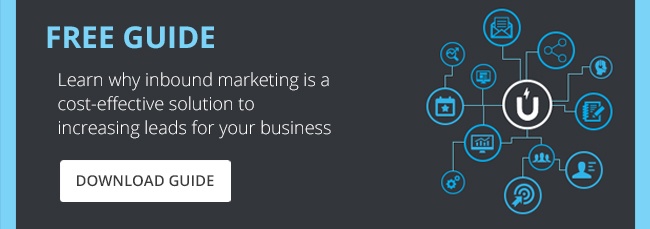What is closed-loop marketing?
Closed-loop marketing is marketing that relies on data and insights from closed-loop reporting. “Closing the loop” just means that sales teams report to marketing about what happened to the leads that they received, which helps marketing understand their best and worst lead sources.

But how exactly does closed-loop marketing work, and what tools to you need to implement it?
The 4 Steps of Closed-Loop Marketing
Closed-loop marketing can essentially be boiled down to four steps.
Step 1: Visitor Arrives on Your Site and a Cookie is Set on His/Her Referral SourceThis is the entry point of your closed-loop system. As leads progress through your sales and marketing stages, the cookie will enable you to attribute them back to the proper channel. For example, whether they came into your site from a URL you used on print collateral you distributed at a trade show, an email marketing campaign , or a search term, you’ll be able to trace them back to that original source.
Step 2: Visitor Browses Your Website & Cookie Tracks the Visitor's ActionsAs you attract traffic and identify where that traffic is coming from, you need to track the behaviour of those visitors. Which pages are they viewing? What is their trajectory of actions? Such intelligence will illustrate a path that can, down the road, help you optimise for faster visitor-to-lead or even visitor-to-customer conversions.
Step 3: Visitor Converts Into a Lead by Completing & Submitting a Lead-Capture FormIn order to monetise the traffic you're getting and send qualified prospects to your sales team, you need to convert visitors into leads . You can make this happen by sending incoming traffic to landing pages, which make information exchange possible and collect more intel from your visitors.
More than just knowing where your visitors are coming from, you’ll also need to know who they are. This is crucial to closing the loop and being able to associate closed customers back to their entry source
Step 4: Lead Becomes a Customer & Original Source is CreditedNow it’s time to figure out how these visits transformed into sales. Which one of your marketing channels contributed the most customers? Are there ways you can optimise the process for other sources? Closed-loop marketing enables you to identify the activities that bring in the most (and least) revenue.
To do so, you need to look at all of the leads your sales team has closed and attribute them back to their original marketing initiative. If everything is set up correctly in steps one through four, this should be a relatively straightforward process. For most medium-sized businesses, the easiest way to achieve this is through your customer relationship management (CRM).
The Tools Required for Closed-Loop Marketing
But if this all sounds pretty dependent on tools, you're right , it does. In order to set up closed-loop marketing, you need to be able to map marketing activities to sales, and this requires connecting your marketing software to your customer relationship management (CRM) software. i.e you need to be able to tie the intelligence from your marketing communication with prospective, current, and former customers to the intelligence your internal team has built with these same people.
1. Customer Relationship Management Software
The purpose of a CRM system is to synchronise the activities of your sales, marketing, and customer support teams. A CRM platform can support your business in a number of ways ranging from selling and fulfilment to identifying and rewarding loyal customers.
2. Marketing Software
Marketing software (like HubSpot ) keeps a record of your marketing data and makes it actionable -- by giving you the information you need to optimise campaigns, enabling lead conversions, and revealing results.
Integrating the Two Tools
As a sophisticated marketer, you want the two systems to talk to each other. So when one of your sales representatives closes a deal, he/she can mark that sale as “won” in your CRM, and that will trigger an update in the marketing software. You will then be able to go backwards and identify where this new customer originally came from. What channel brought them to your website? What pages did they view afterward? At what point did they convert into a lead, and then a customer?
Benefits of Closed-Loop Marketing
The intelligence marketers can gather from closed-loop reporting will expose conversion assists, or pages on their website that visitors viewed before they converted into leads or customers. Understanding a website’s conversion assists can help marketers identify the most influential pages they own. In doing so, they can learn a lot about why those pages are (or aren’t) effective, and apply these insights to improve poorly performing web pages.
Closed-loop marketing also enables you to achieve alignment between sales and marketing and define the operations between the two departments. Other benefits of the integration between your marketing software and CRM solutions include the ability to implement sales assignment rules, lead scoring systems, lead nurturing campaigns, custom lead scoring, and monetary goal setting.
Lupo Digital is a digital sales and marketing growth team that specialises in inbound marketing, helping organisations with their client engagement and building strong ongoing relationships with their prospects and clients. We have a passionate, experienced team dedicated to bringing all the benefits of inbound marketing. For more information about how inbound marketing works for your organisation, download our executive guide to inbound marketing.

Written by Michael Wolf
Founder of Lupo Digital, Michael is extremely passionate about digital and inbound marketing. Michael helps organisations drive rapid and sustainable customer and revenue growth.
SUBSCRIBE TO OUR BLOG
SUBSCRIBE TO OUR BLOG
Popular
Categories
- Inbound Marketing (94)
- Digital Marketing Strategy (85)
- Content Marketing (29)
- Lead Management (27)
- Artificial Intelligence (AI) (26)
- Business Growth (26)
- HubSpot (26)
- CRM (23)
- Marketing Automation (20)
- Email Marketing (16)
- Sales Enablement (14)
- Referral Marketing (12)
- Customer Relationship Management (CRM) (11)
- Social Media Marketing (8)
- Blogging (7)
- Buyer Personas (7)
- HubSpot Product Feature Updates (7)
- Buyer Journey (6)
- Growth Driven Website Design (6)
- content strategy (6)
- Goal Setting (5)
- Paid Media (4)
- SEO (3)
- Influencer Marketing (2)
- Sales & CRM HUG ANZ (2)
- Conversational Marketing (1)
- Legal practice management software (1)
- User Management (1)
- training (1)



